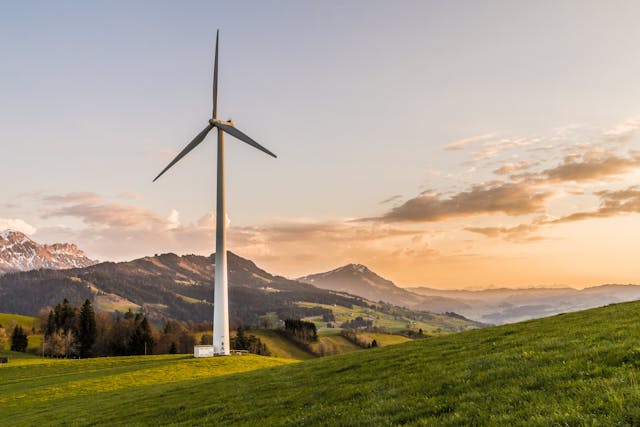As 2023 comes to a close, scientists have publicly stated that it is on track to be the hottest year on record, with a current temperature that is 1.43 degrees Celsius above the pre-industrial average. Scientists indicate that the last several years may have been warmer than any point in the past 125,000 years.
Despite ongoing efforts to combat climate change, existing policies and initiatives are struggling to match the alarming rate at which the climate crisis is accelerating. The urgency to address this disparity between climate policy and the rate of climate change is increasingly apparent. Extreme weather events are taking a severe toll, and the consequences of these events far outweigh the costs associated with transitioning to cleaner energy sources.
Let’s take a closer look at the severity of the climate crisis and potential solutions for mitigating climate change before the damage becomes irreversible.
Forecasting a dire and inequitable future
Predicting future temperatures in a world experiencing such unprecedented extremes is complex. Nonetheless, projections suggest that even with existing emissions-cutting policies, temperatures could escalate between 2.7 and 2.8 degrees Celsius by the end of this century.
This shift to a hotter world paints a bleak picture, including scenarios of uninhabitable conditions for millions, increased rates of flooding in major cities like New York, and irreversible transformations of critical ecosystems like the Amazon rainforest.
The impact of a hotter climate will not be distributed equally. Wealthier nations are relatively shielded from these climate-related effects compared to less affluent countries. Vulnerable communities often lack adequate resources and face a higher risk of deaths from factors like heat exposure and the spread of disease.
Accelerating solutions to match the rate of climate change
Although the situation seems daunting, several measures can be taken to address the climate crisis and mitigate its potentially catastrophic consequences.
While immediate cooling of the planet may not be feasible, there is potential to significantly reduce future warming within a generation. The achievements following the Paris Agreement show this potential.
Substantial investments in renewable energy, the widespread deployment of solar power, millions of electric vehicles on the roads, the enactment of climate laws globally, and considerable spending on energy transition can all alter the planet’s current trajectory.
Building batteries to store clean energy
The remarkable progress in renewable energy deployment has the potential to significantly reduce costs and make clean alternatives more competitive with fossil fuels.
However, to efficiently harness these clean energy sources around the clock, innovations in energy technology—particularly in battery technology—are imperative. While the costs of clean energy have plummeted, advancements in energy storage solutions have not kept pace, which has hindered the seamless use of renewable energy sources.
Adding subsidies for speedy adoption
Government support is crucial for accelerating the adoption of cleaner energy alternatives. Initiatives like the US Inflation Reduction Act have shown how such support can catalyze the development of clean technologies. Similarly, global efforts to incentivize and subsidize cleaner alternatives can effectively drive down costs and ramp up demand for sustainable solutions.
Streamlining bureaucratic processes
The expansion of clean energy solutions has been hindered by bureaucratic delays in issuing permits and expanding grids. Essential reforms are necessary to expedite infrastructure development and grid expansions, both pivotal for achieving emission reduction goals. Reducing red tape and implementing streamlined processes can significantly accelerate the pace of deployment of clean energy solutions.
Closing financial gaps for an effective race against rising temperatures
The financial landscape plays a critical role in the fight against climate change. The massive funding required to eliminate emissions requires innovative financial approaches.
Strategies like blended finance—which involves pooling investments from various institutions to support challenging projects, and reforms at multilateral lenders can unlock private investments crucial for accelerating the energy transition.
Catalyzing change through markets and policies
Shaping markets and policies is a pivotal part of driving the transition to a greener economy. Initiatives to create and reform carbon markets, incentivize investments in clean technologies, and reshape existing markets can significantly drive sustainable change. By increasing the cost of emitting carbon, markets can incentivize companies to invest in low-emission alternatives, furthering the shift toward sustainability.
Ensuring global inclusion in climate solutions
While some regions have made substantial progress in adopting clean energy, others, particularly those with abundant renewable resources, have lagged. Designing inclusive climate policies that protect vulnerable populations and bridge financial gaps is crucial for a more equitable response to climate change. This approach ensures that all regions have access to and benefit from clean energy technologies.
An urgent call to action
Despite the alarming signs of escalating climate impacts, emissions continue to rise and pose an imminent threat to our planet. The urgency to address climate change is paramount. Collaborative global efforts, innovative financial models, streamlined policies, and inclusive strategies are imperative to mitigate the impending climate crisis. Decisive action is the only path to ensuring a sustainable future for our planet.

